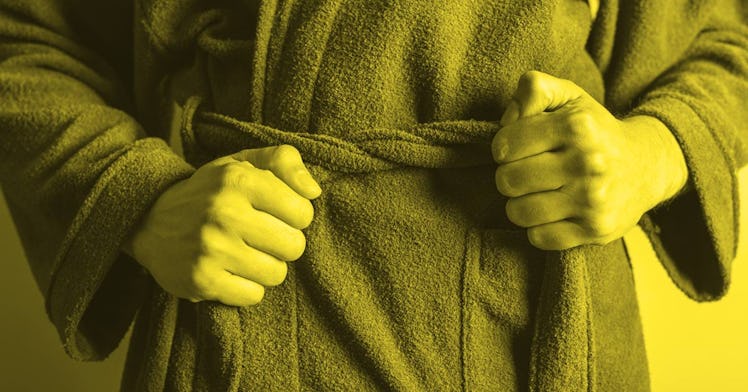How to Give Yourself a Testicular Cancer Self Examination
Preventing cancer can be an act of tenderness. Here's how to look after your boys.

Fondling your own balls should be the easiest thing in the world. But when it comes to the testicular self-exam, men often balk. There’s a lot going on down there, and figuring out how to check for worrying lumps—and when, in fact, to worry—is a challenge. Nonetheless, part of being a responsible man, and a responsible father, is learning to grab your own health by the balls. A well-performed testicular self-exam might catch testicular cancer early, saving your life and your kid a bunch of money of therapy.
“It’s important to catch testicular cancer early, because the likelihood of a cure has become higher and higher,” Dr. Jim C. Hu, a urologist at Weill Cornell Medicine and New York Presbyterian Hospital, told Fatherly. “There are about 9,000 new cases per year, and about 400 deaths.”
There are three basic steps to the testicular self-exam. Each is critical and none of them are complicated.
- Stand in front of a mirror (ideally after a warm shower, when the scrotum is relaxed) and check your scrotum for swelling. Swelling alone is not usually a sign of testicular cancer, but it remains an important finding that could indicate other diseases. “Sometimes patients notice one testicle is more swollen than the other, and that is an important indication to see a doctor,” Dr. S. Adam Ramin, urologist and medical director of Urology Cancer Specialists in Los Angeles, told Fatherly. “It maybe an infection, or maybe a hydrocele.
- Next, place your index and middle fingers under each testicle and your thumb on top, and gently roll it between your fingers. “You’re feeling for symmetry of the testicles,” Hu says. “It’s usually a pretty homogenous feel, throughout. If there’s a lump or firm area that’s much harder and more painful when you press gently, that would be concerning.” Not all lumps are created equal.
“What you’re looking for is very abnormal lumps, or lumps getting bigger, that are fixed to the testicle,” Dr. Robert Valenenzuela, a urologist at the Icahn School of Medicine at Mount Sinai, explains. “Things that are mobile, on the skin, could be sebaceous cysts and these are minor, for the most part.
- Finally, locate the epididymis. It’s a soft structure near the back of the testicle, and one of the natural features of your body that you are most likely to mistake for a lump. Knowing where it is and what it feels like will help you determine whether you have stumbled on a real problem or a normal duct. “I recommend testicular exams every two to six months,” Ramin says. “Regularly enough that every man knows what his testicles feel like so that when there’s an irregularity he can react more easily.”
If trying to tell your epididymis from cancer still sounds like a nightmare, take heart. You won’t be checking your balls forever. The vast majority of cancer cases appear before age 40 and physicians often let self-exams slide for older patients. “It’s more concerning with young guys. The incidence of testicular cancer is a lot higher,” Valenzuela says. “With the older guys, we don’t worry as much.”